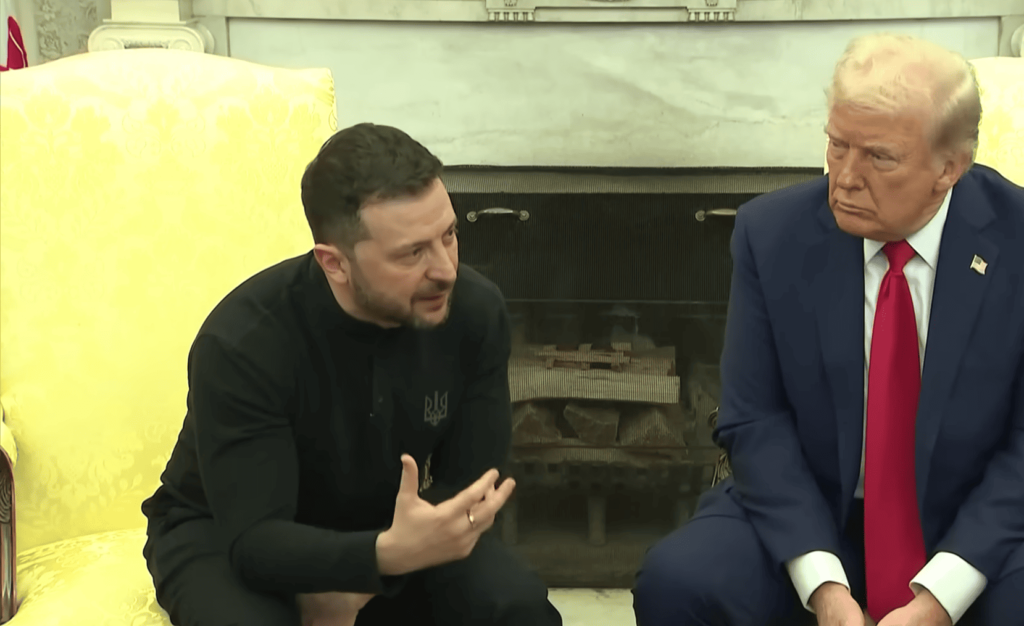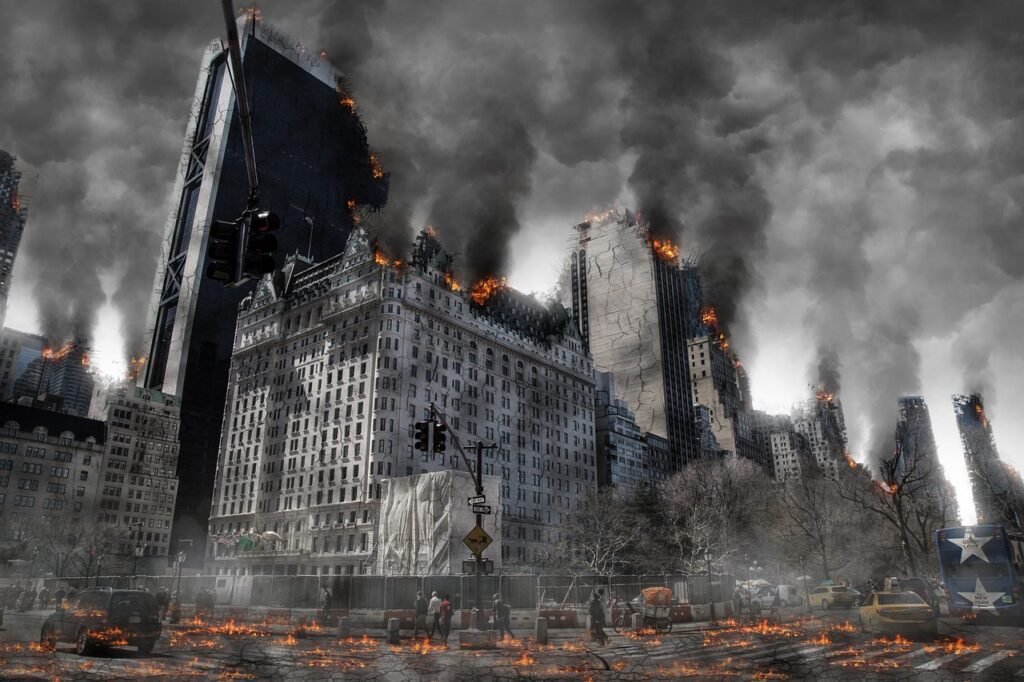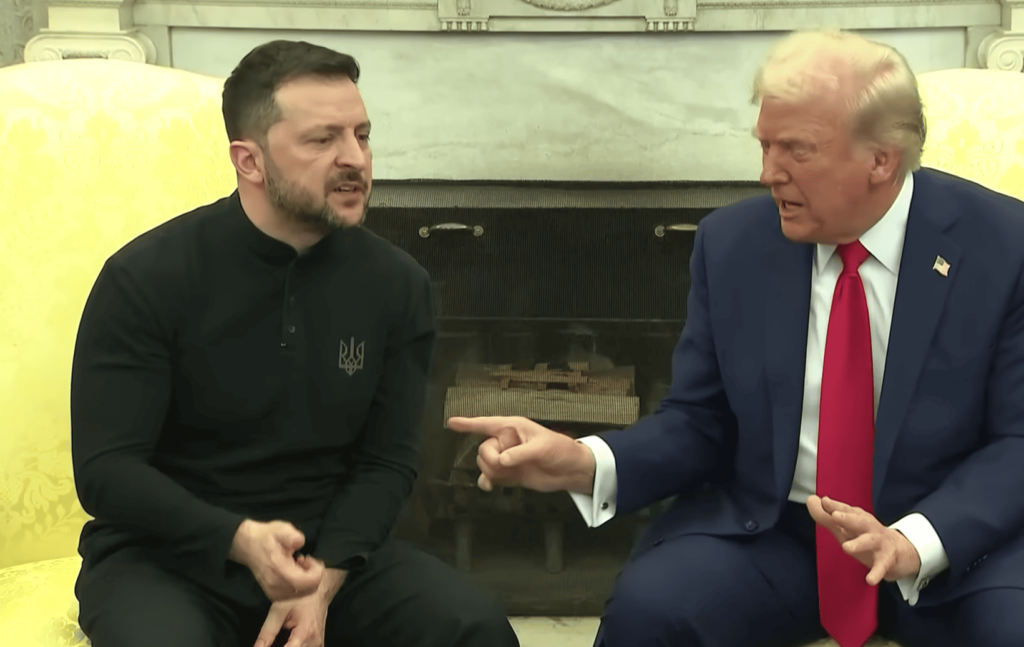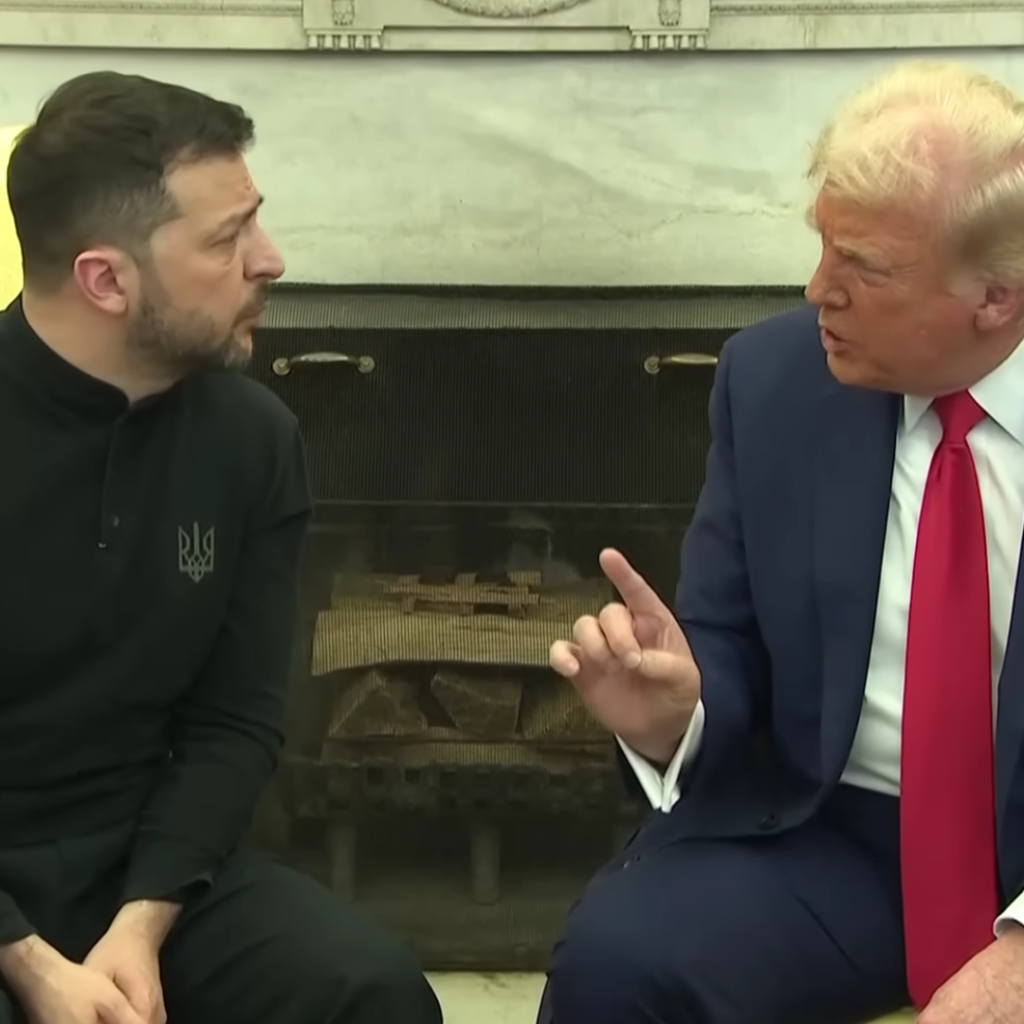The recent high-stakes meeting between former U.S. President Donald Trump and Ukrainian President Volodymyr Zelenskyy has triggered fresh controversy, exposing the harsh realities of Ukraine’s geopolitical position. What was supposed to be a discussion on a minerals deal turned into a tense confrontation, highlighting how Ukraine has been left weakened, financially drained, and at the mercy of global superpowers.

A War That Backfired on Ukraine
When the Russia-Ukraine conflict began, Zelenskyy positioned himself as a strong-willed leader defending his nation’s sovereignty. However, his steadfast commitment to NATO aspirations and direct confrontation with Russia proved to be a double-edged sword. Ukraine, instead of emerging stronger, has suffered immense destruction—its economy has collapsed, infrastructure has been devastated, and millions of citizens have either fled or perished.
The Western allies, particularly the U.S., extended military and financial support to Ukraine, but not without strings attached. Ukraine’s reliance on Western aid has trapped it in a precarious situation where it must now comply with U.S. interests, including handing over control of its valuable natural resources.

Trump’s Ultimatum: A Moment of Realization for Ukraine?
During the recent meeting, tensions between Trump and Zelenskyy were palpable. Trump, known for his blunt diplomatic style, accused Zelenskyy of “risking World War III” by continuing the conflict with Russia. He made it clear that U.S. support was conditional, offering a minerals deal that many saw as an exploitation of Ukraine’s dwindling options.
Zelenskyy, however, pushed back, criticizing the U.S. for not fully understanding the cost of war on Ukraine. His frustration was evident, but the truth remained: Ukraine was no longer in a position to negotiate on equal terms. The war had weakened Ukraine to the point where it was now at the mercy of global powers, forced to choose between economic survival and national sovereignty.
A Costly Gamble That Could Have Been Avoided
Zelenskyy’s initial ambition to bring Ukraine closer to NATO was seen as a bold move, but in hindsight, it may have been a miscalculation. By pushing for NATO membership and opposing Russian influence, Ukraine found itself caught in the middle of a geopolitical tug-of-war—one that has left the country battered beyond recognition.
Rather than acting as a bridge between the East and the West, Ukraine became the battleground for their power struggle. The war’s destruction, coupled with Western exploitation of Ukraine’s resources, has made many question whether Zelenskyy should have pursued a different path—one of neutrality rather than confrontation.

The Path Not Taken: Neutrality Over Devastation
With the benefit of hindsight, it’s clear that Ukraine’s best course of action would have been to maintain neutrality rather than aggressively pursue NATO membership. A neutral Ukraine could have played the role of a strategic buffer state, maintaining good relations with both NATO and Russia while preserving its own sovereignty.
Had Zelenskyy chosen diplomacy over confrontation, Ukraine might have avoided the catastrophic war that has set it back economically, politically, and socially. Instead of being a pawn in a global power struggle, Ukraine could have been a stabilizing force in the region.
Final Thoughts
While Zelenskyy’s leadership was driven by the desire to protect Ukraine, his rigid stance on NATO membership and unwillingness to negotiate a neutral position have cost his country dearly. Now, as the U.S. tightens its grip over Ukraine’s resources and the nation continues to suffer, it is evident that stubbornness came at an immense cost. A different path—one of neutrality and balanced diplomacy—might have spared Ukraine from this tragic fate.
Check out Asia’s Biggest Air Defense Show – AERO INDIA 2025 in Bengaluru, India, for the latest in aerospace and defense technology!












